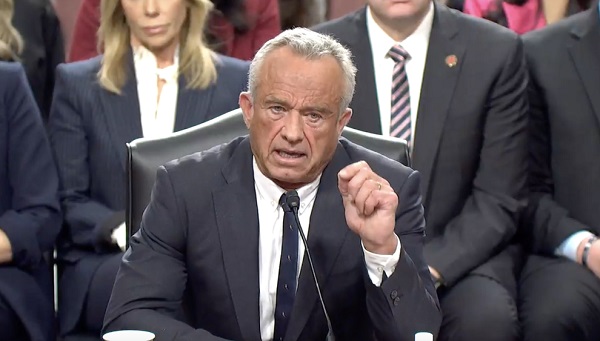Alberta
New Alberta Election Act bans electronic vote counting machines, lowers threshold for recalls and petitions

Alberta’s government is introducing changes to protect democracy, deliver fair and open elections and increase confidence in every vote cast.
Voting gives Albertans a voice in shaping the future of our province. Direct democracy processes like referendums, recall and citizen initiative petitions provide further opportunities for Albertans to be heard and express their views. The proposed Election Statutes Amendment Act, 2025, would make Alberta’s elections and other democratic processes more open, secure and accessible.
“I believe that democracy thrives when people trust the process. These changes would make elections at every level in Alberta more accessible and transparent while protecting their integrity, ensuring confidence in the outcomes. We are also creating more opportunities for Albertans to be involved in direct democracy and to have their say on issues that matter to them.”
Fair and free elections are the foundation of democracy, and Alberta’s government is taking action to protect them. The proposed changes include:
- Banning the use of electronic tabulators and other automated voting machines, requiring all ballots to be counted by hand to protect election integrity.
- Eliminating vouching at voting stations to strengthen identification and verification processes.
- Requiring unofficial vote counts to be completed within 12 hours of polls closing to provide timely, reliable results.
- Voters being required to cast their ballot in their constituency of residence or by requesting a special ballot.
- Expanding access to special ballots, allowing any voter to request one without needing to provide a reason while protecting integrity by requiring voters to personally request their special ballot (with exceptions for those needing assistance due to a disability).
- Updating the Recall Act to make it easier for Albertans to hold elected officials accountable by lowering the signature threshold and extending the timeframe to collect signatures.
- Improving the Citizen Initiative Act process by setting the threshold for all successful petitions at 10 per cent of eligible voters who participated in the last general election.
“Albertans rightly expect their government to make sure democratic processes are fair and transparent with accurate and timely results. These proposed amendments would deliver on my mandate to review and make changes to strengthen public trust in the integrity of our elections.”
Additional amendments under the Election Statutes Amendment Act, 2025 would:
- Allow corporate and union contributions for provincial elections while maintaining transparency and accountability through existing financial disclosure requirements.
- Improve access to voting for First Nations and Métis Settlements during referendums and Senate elections.
- Enhance emergency response provisions for voting disruptions during referendums and Senate elections.
These changes would help ensure that Alberta’s democratic processes are open, secure, and reflective of the will of Albertans, while creating new opportunities for greater public participation.
Quick facts
- The Election Act governs the process for provincial elections, by-elections and plebiscites in Alberta and creates the office of the chief electoral officer, the head of Elections Alberta.
- The Election Finances and Contributions Disclosure Act governs the financing of provincial elections, Senate elections and referendums, including rules for registered political parties, constituency associations, candidates, leadership contestants and third parties.
- The Alberta Senate Election Act governs the process for Senate elections in Alberta.
- The Referendum Act governs the process for referendums in Alberta.
- The Recall Act outlines the process for Albertans to initiate the recall of an elected MLA.
- The Citizen Initiative Act allows eligible voters in Alberta to propose legislative or policy initiatives, constitutional referendum questions and establishes rules for advertising and spending.
Alberta
Alberta Precipitation Update

Below are my updated charts through April 2025 along with the cumulative data starting in October 2024. As you can see, central and southern Alberta are trending quite dry, while the north appears to be faring much better. However, even there, the devil is in the details. For instance, in Grande Prairie the overall precipitation level appears to be “normal”, yet in April it was bone dry and talking with someone who was recently there, they described it as a dust bowl. In short, some rainfall would be helpful. These next 3 months are fairly critical.
Thanks for reading William’s Substack!
Subscribe for free to receive new posts and support my work.
Alberta
Alberta’s move to ‘activity-based funding’ will improve health care despite naysayer claims

From the Fraser Institute
After the Smith government recently announced its shift to a new approach for funding hospitals, known as “activity-based funding” (ABF), defenders of the status quo in Alberta were quick to argue ABF will not improve health care in the province. Their claims are simply incorrect. In reality, based on the experiences of other better-performing universal health-care systems, ABF will help reduce wait times for Alberta patients and provide better value-for-money for taxpayers.
First, it’s important to understand Alberta is not breaking new ground with this approach. Other developed countries shifted to the ABF model starting in the early 1990s.
Indeed, after years of paying their hospitals a lump-sum annual budget for surgical care (like Alberta currently), other countries with universal health care recognized this form of payment encouraged hospitals to deliver fewer services by turning each patient into a cost to be minimized. The shift to ABF, which compensates hospitals for the actual services they provide, flips the script—hospitals in these countries now see patients as a source of revenue.
In fact, in many universal health-care countries, these reforms began so long ago that some are now on their second or even third generation of ABF, incorporating further innovations to encourage an even greater focus on quality.
For example, in Sweden in the early 1990s, counties that embraced ABF enjoyed a potential cost savings of 13 per cent over non-reforming counties that stuck with budgets. In Stockholm, one study measured an 11 per cent increase in hospital activity overall alongside a 1 per cent decrease in costs following the introduction of ABF. Moreover, according to the study, ABF did not reduce access for older patients or patients with more complex conditions. In England, the shift to ABF in the early to mid-2000s helped increase hospital activity and reduce the cost of care per patient, also without negatively affecting quality of care.
Multi-national studies on the shift to ABF have repeatedly shown increases in the volume of care provided, reduced costs per admission, and (perhaps most importantly for Albertans) shorter wait times. Studies have also shown ABF may lead to improved quality and access to advanced medical technology for patients.
Clearly, the naysayers who claim that ABF is some sort of new or untested reform, or that Albertans are heading down an unknown path with unmanageable and unexpected risks, are at the very least uninformed.
And what of those theoretical drawbacks?
Some critics claim that ABF may encourage faster discharges of patients to reduce costs. But they fail to note this theoretical drawback also exists under the current system where discharging higher-cost patients earlier can reduce the drain on hospital budgets. And crucially, other countries have implemented policies to prevent these types of theoretical drawbacks under ABF, which can inform Alberta’s approach from the start.
Critics also argue that competition between private clinics, or even between clinics and hospitals, is somehow a bad thing. But all of the developed world’s top performing universal health-care systems, with the best outcomes and shortest wait times, include a blend of both public and private care. No one has done it with the naysayers’ fixation on government provision.
And finally, some critics claim that, under ABF, private clinics will simply focus on less-complex procedures for less-complex patients to achieve greater profit, leaving public hospitals to perform more complex and thus costly surgeries. But in fact, private clinics alleviate pressure on the public system, allowing hospitals to dedicate their sophisticated resources to complex cases. To be sure, the government must ensure that complex procedures—no matter where they are performed—must always receive appropriate levels of funding and similarly that less-complex procedures are also appropriately funded. But again, the vast and lengthy experience with ABF in other universal health-care countries can help inform Alberta’s approach, which could then serve as an example for other provinces.
Alberta’s health-care system simply does not deliver for patients, with its painfully long wait times and poor access to physicians and services—despite its massive price tag. With its planned shift to activity-based funding, the province has embarked on a path to better health care, despite any false claims from the naysayers. Now it’s crucial for the Smith government to learn from the experiences of others and get this critical reform right.
-

 Crime2 days ago
Crime2 days agoPam Bondi Reveals What The Holdup Is With Epstein File Release
-

 2025 Federal Election2 days ago
2025 Federal Election2 days agoGroup that added dozens of names to ballot in Poilievre’s riding plans to do it again
-

 Autism1 day ago
Autism1 day agoNIH, CMS partner on autism research
-

 2025 Federal Election2 days ago
2025 Federal Election2 days agoCarney says Liberals won’t make voting pact with NDP
-

 conflict2 days ago
conflict2 days agoWATCH: U.S. ending bombing campaign on Yemeni militant group
-

 COVID-192 days ago
COVID-192 days agoStudy finds nearly half of ‘COVID deaths’ had no link to virus
-

 Business1 day ago
Business1 day agoInnovative Solutions Like This Plan To Provide Power For Data Centres Will Drive Natural Gas Demand For Decades
-

 Economy1 day ago
Economy1 day agoCanada’s Energy Wealth Is Bleeding South









